The Kodak Duaflex was a Kodak camera manufactured and sold in the United States in the late 1940’s. It is a “twin lens reflex” camera, meaning that there are two lenses; one for using the view finder (the top lens) and one holding the shutter (the bottom lens).
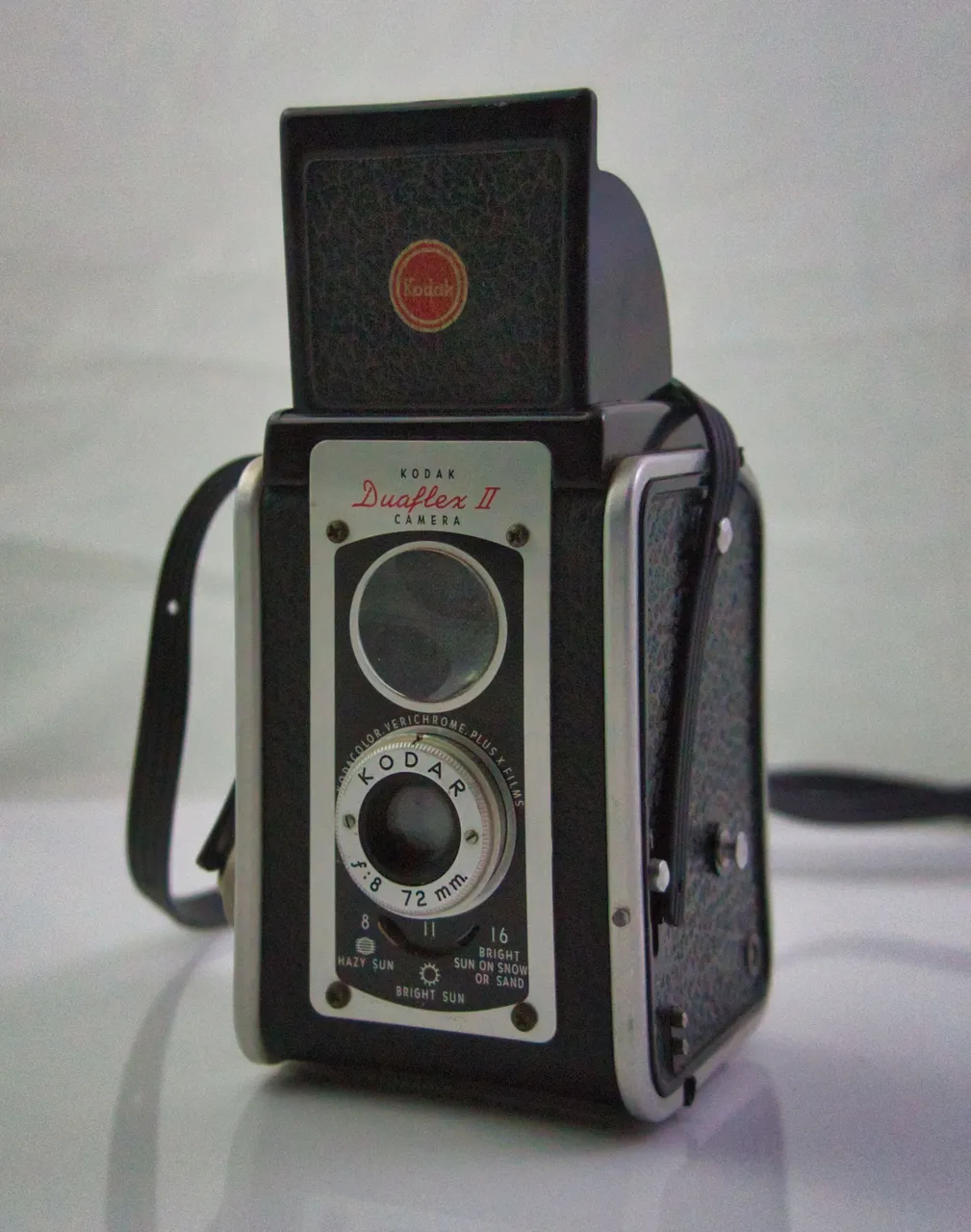
Box style cameras were very popular in the first half of the 20th century because they were rather inexpensive to make and could be used in a mass market; the traditional Brownie camera is really nothing more than a box with a hole in it. This particular camera has some additional features that earlier Brownie’s did not have: adjustable focus and shutter sizes, as well as two shutter speeds.
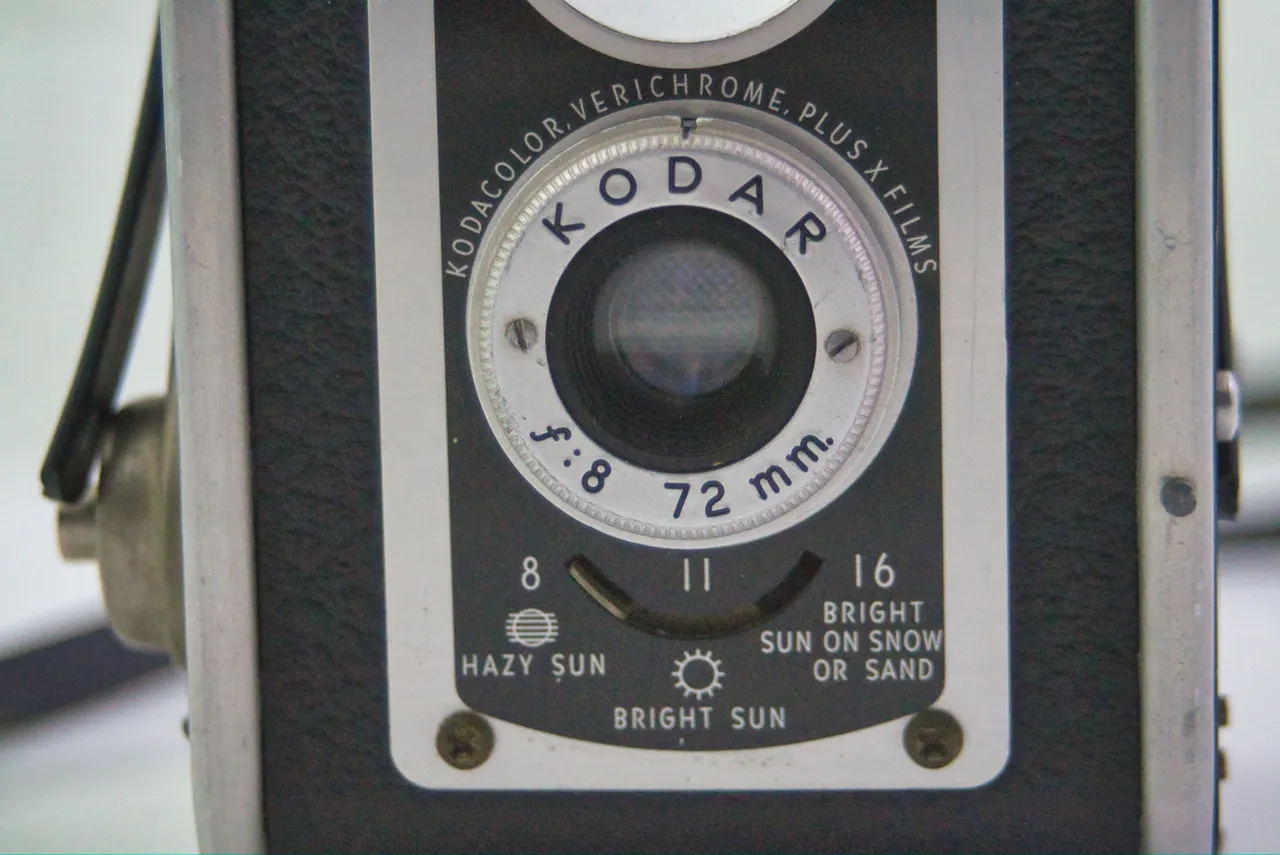
“Focus” can be achieved by turning the bottom lens ring. The viewfinder does not aid in focusing, so the photographer needs to adjust based on the distance to the subject. It cannot be seen here, but engraved on the top of the ring is a list of distances, with focus to that distance achieved by turning the dial until the notch in the ring points to the required distance.
The camera also provided three f/stops, chosen by the switch on the bottom: 8, 11, and 16. The focal length is a prime 72 mm; the focal length is the distance from the lens to the film which, for this camera, also happens to be the depth of the camera.
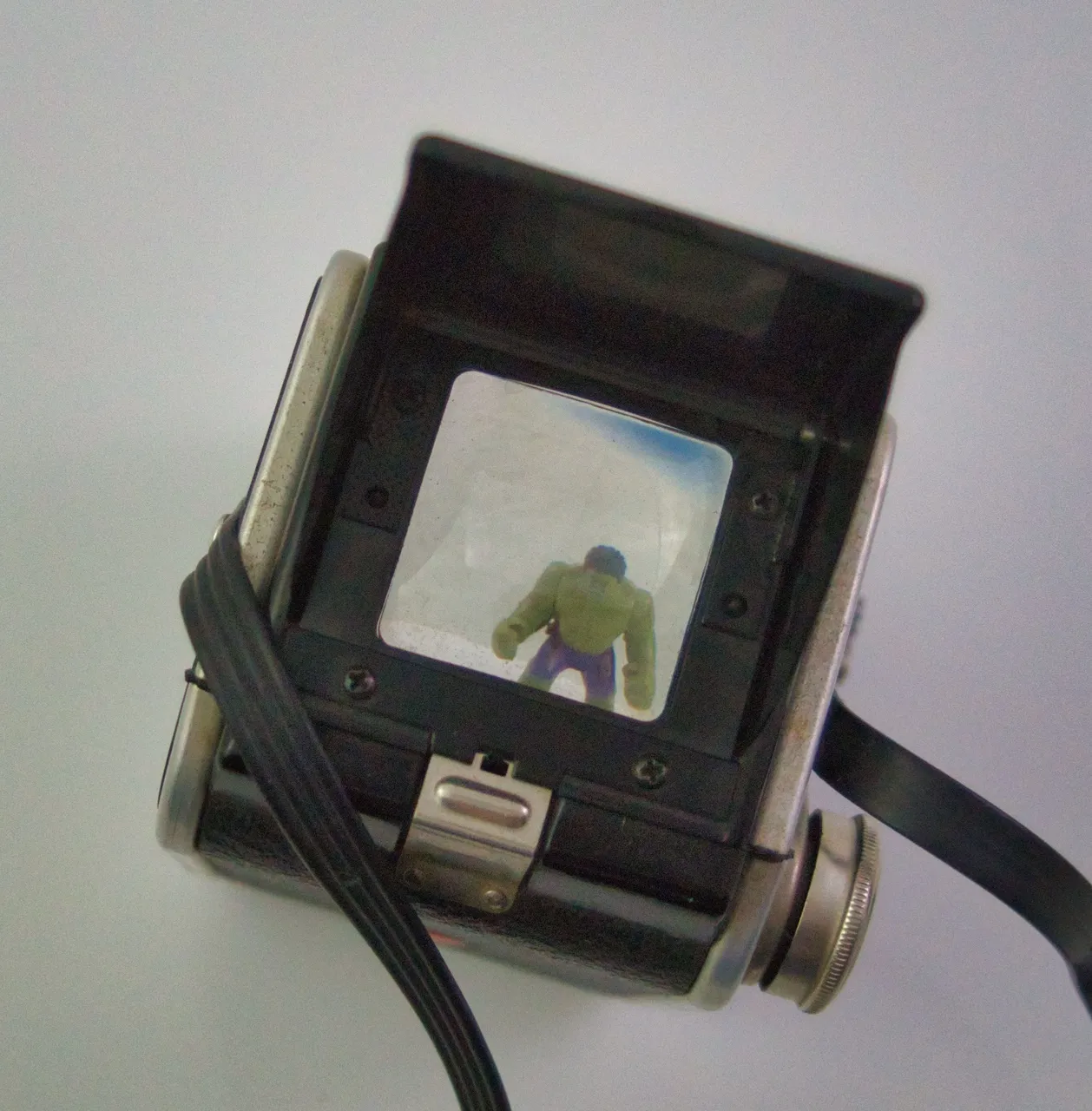
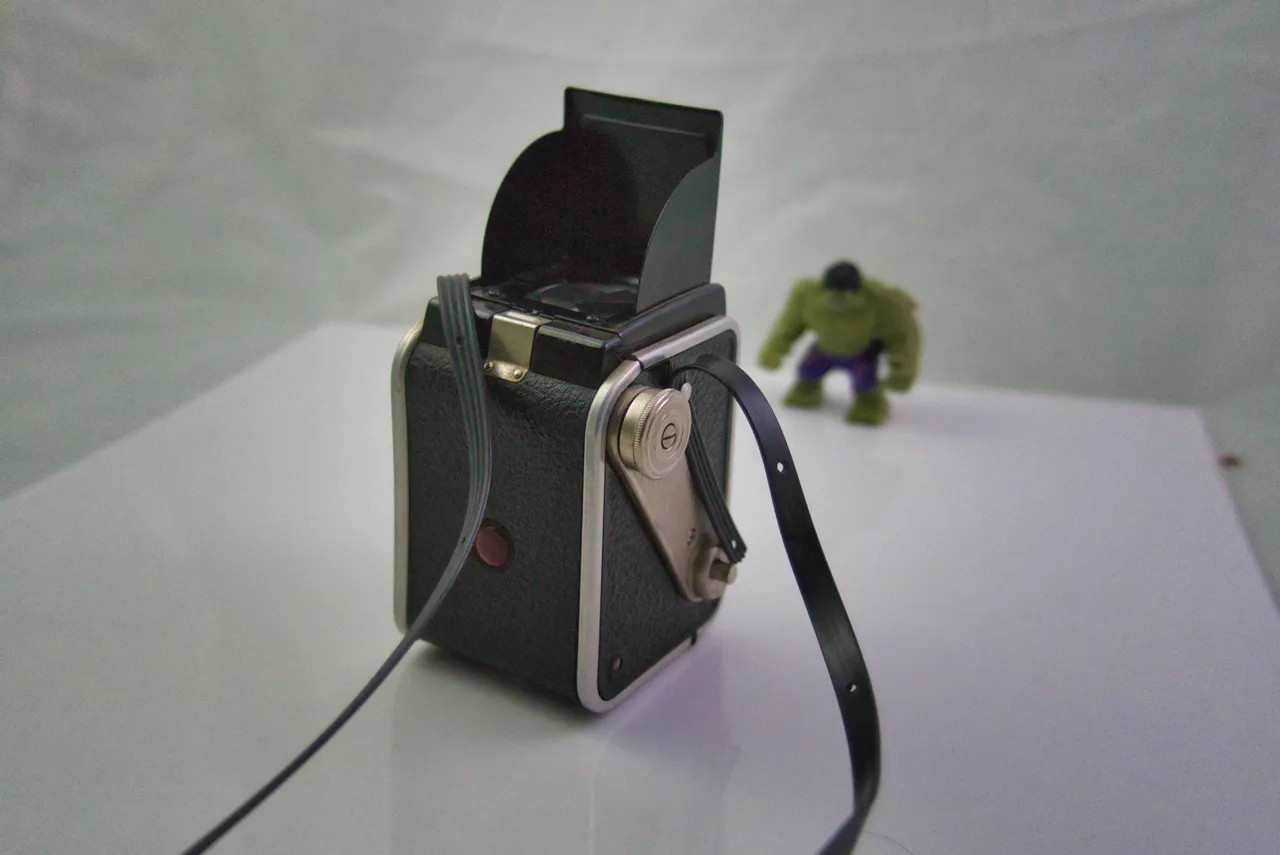
There are two shutter speeds available: 1/30 and “Bulb.” To help the photographer hold the shutter open for longer “bulb” exposures, the bottom of the camera does have a standard gauge tripod attachment. One interesting feature of the camera is that the shutter release will not release after being depressed until the film is advanced, thereby preventing an accidental double-exposure. This feature can be turned off on a picture-by-picture basis by using a small switch beneath the shutter release, so if a double exposure is wanted, it can be done.
The camera uses 620 film which is, sadly, no longer manufactured. It is the same film as 120 film but on a slightly larger spindle. It is possible to put 120 film into a 620 camera by shaving down the diameter of the 120 film’s spindle. It is also possible to “re roll” 120 film onto a 620 spindle; there are, in fact, people who sell “re rolled” 620 film on eBay. It is a time consuming process since it all needs to be done in a darkroom and, as a result, it’s not cheap.
I had found some expired 120 film at a local camera shop; it expired in the 1970’s and was inexpensive, so I figured it would be good to play with in the toy camera to figure out how to work it. Here are some of the better results. These are not colour corrected by any stretch; the photos appear as sepia because the film itself is over 50 years old.
I do not know what this structure is. It looks like the top of a ruined house, but it really isn't, at least I don't think. A creek runs under it.
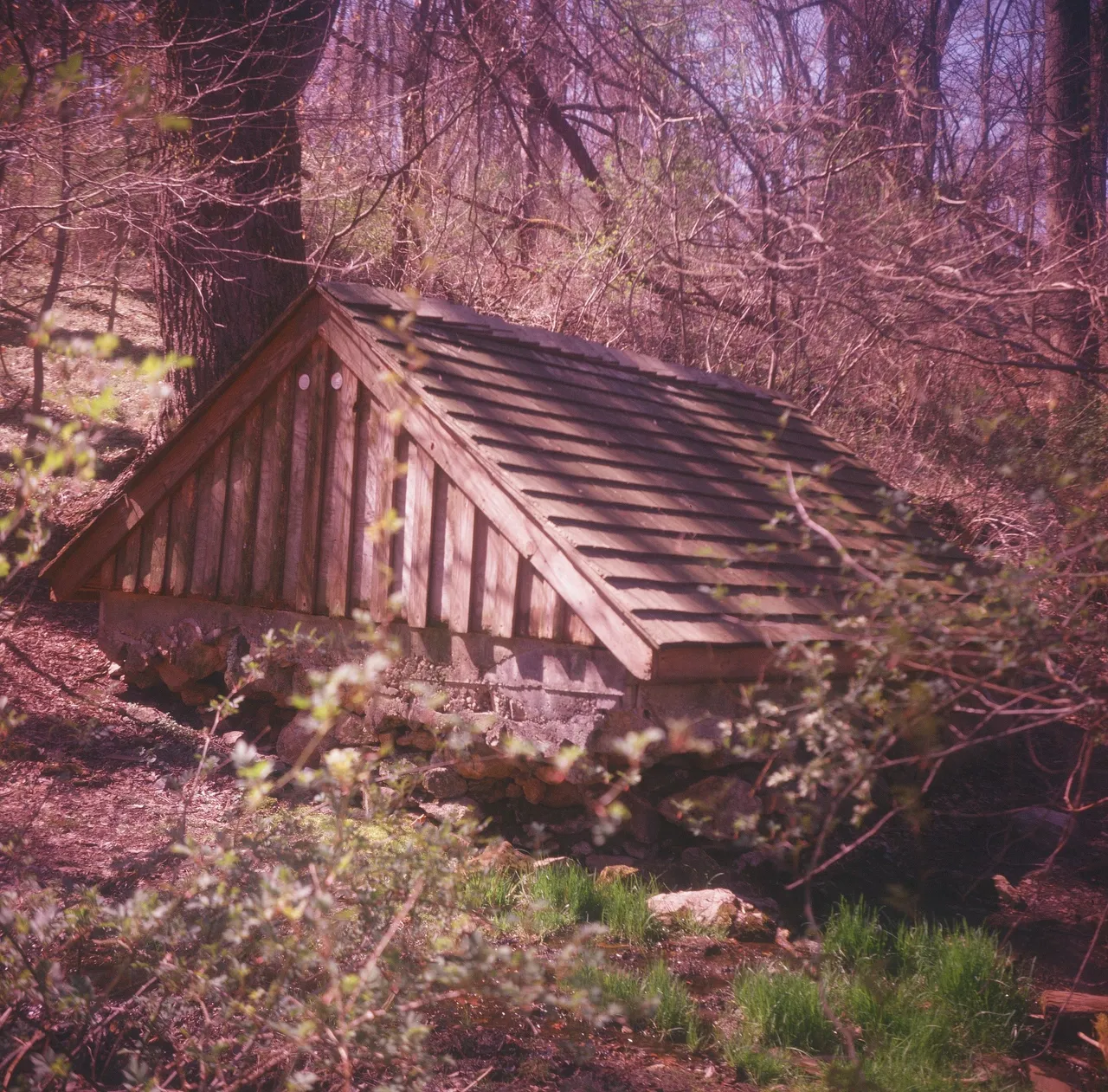
This is one of the Mason Dixon markers lining the boundary between Delaware and Pennsylvania. Fun fact: Delaware was once also owned by William Penn and the two States for some time shared a single Governor. During this time the three Delaware counties were called "the lower counties." Delaware declared it's independence from both Pennsylvania and England at the same time and, in the process, because the first of the 13 States to severe ties with England, and in doing so became The First State.
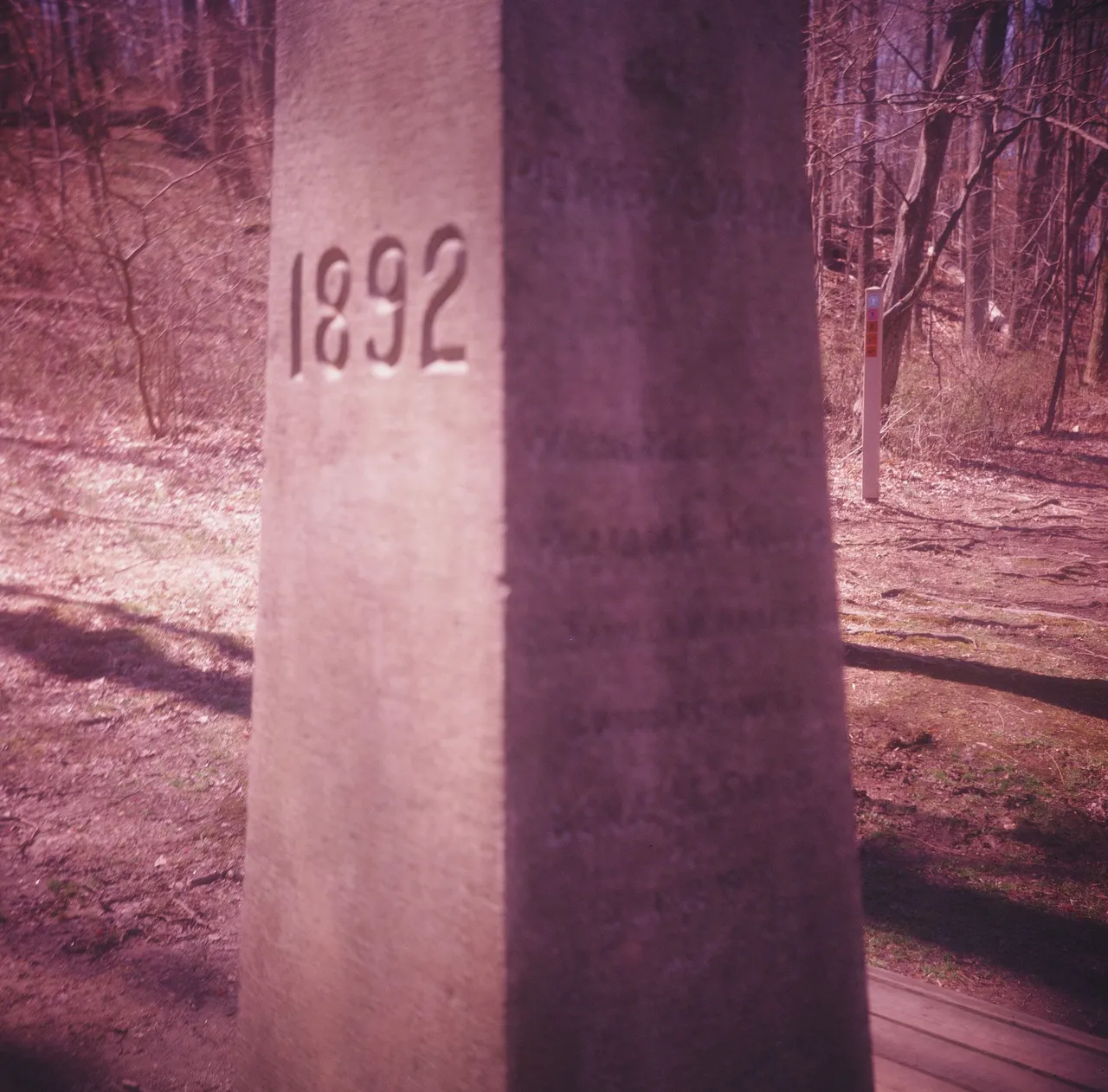
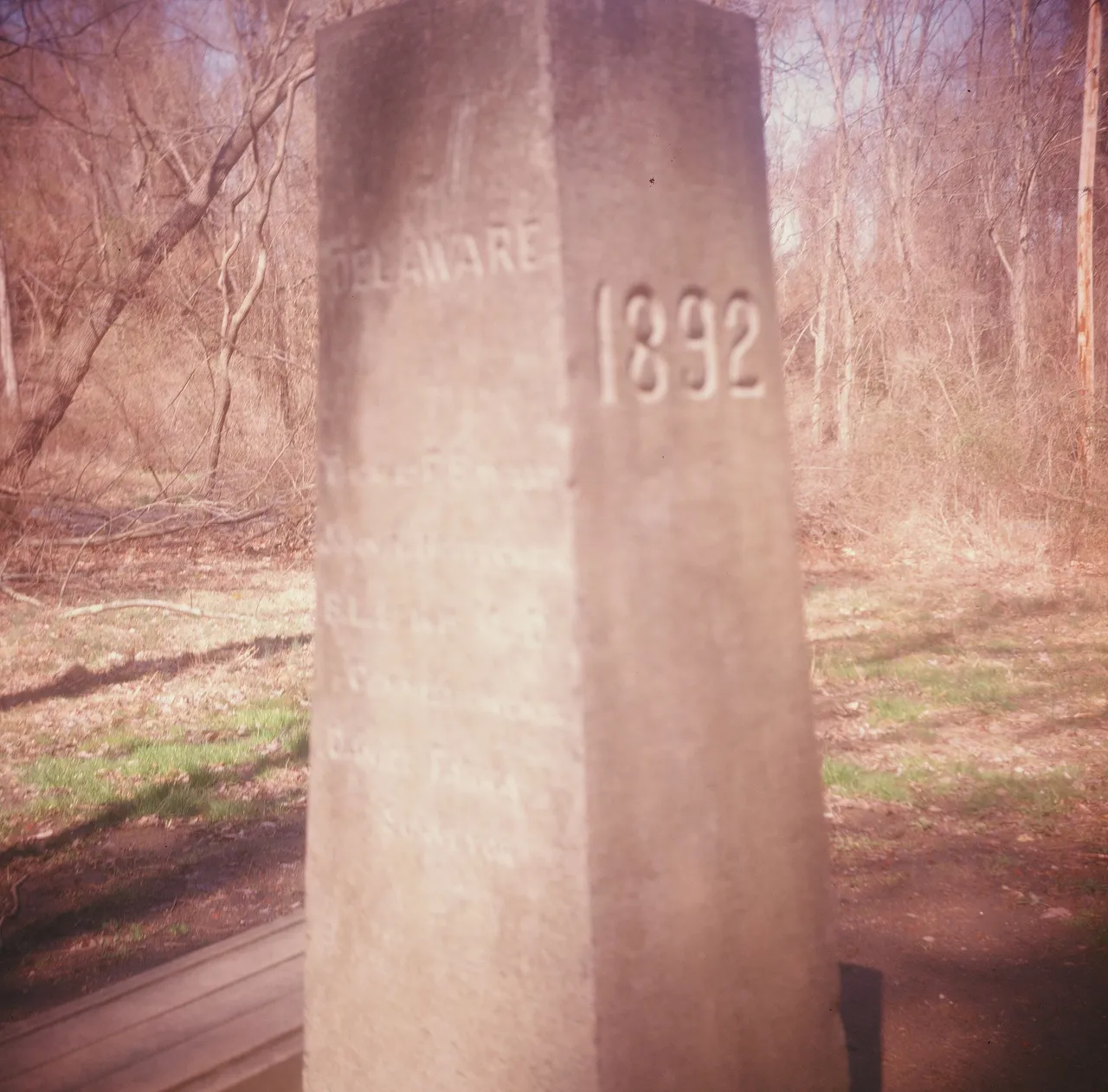
This is not my bike, but I thought it'd make an interesting subject for the photo.
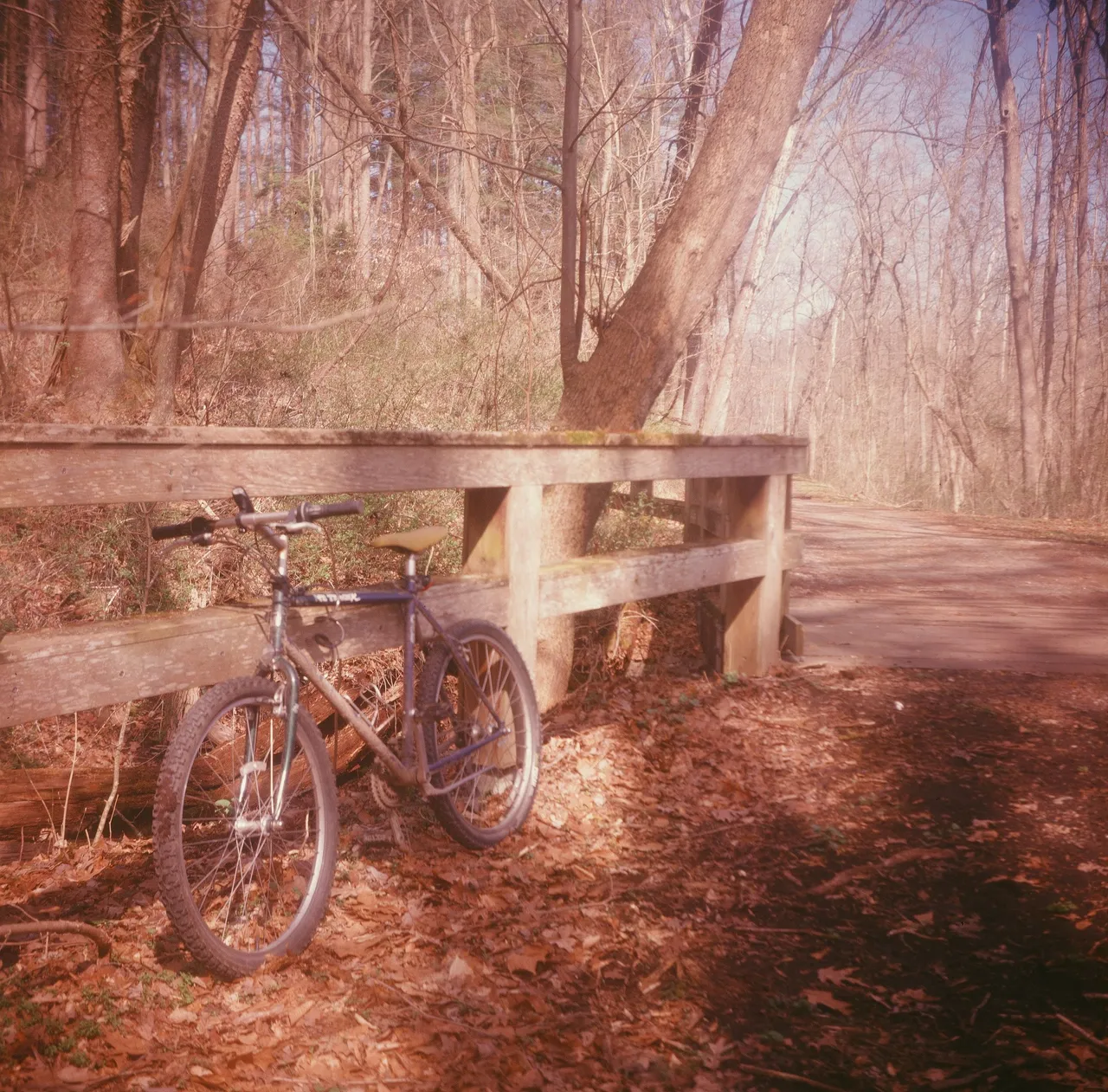
These next pictures were taken in town and are way, way over exposed; obviously I did not dial down the f-stop on these. Oops.
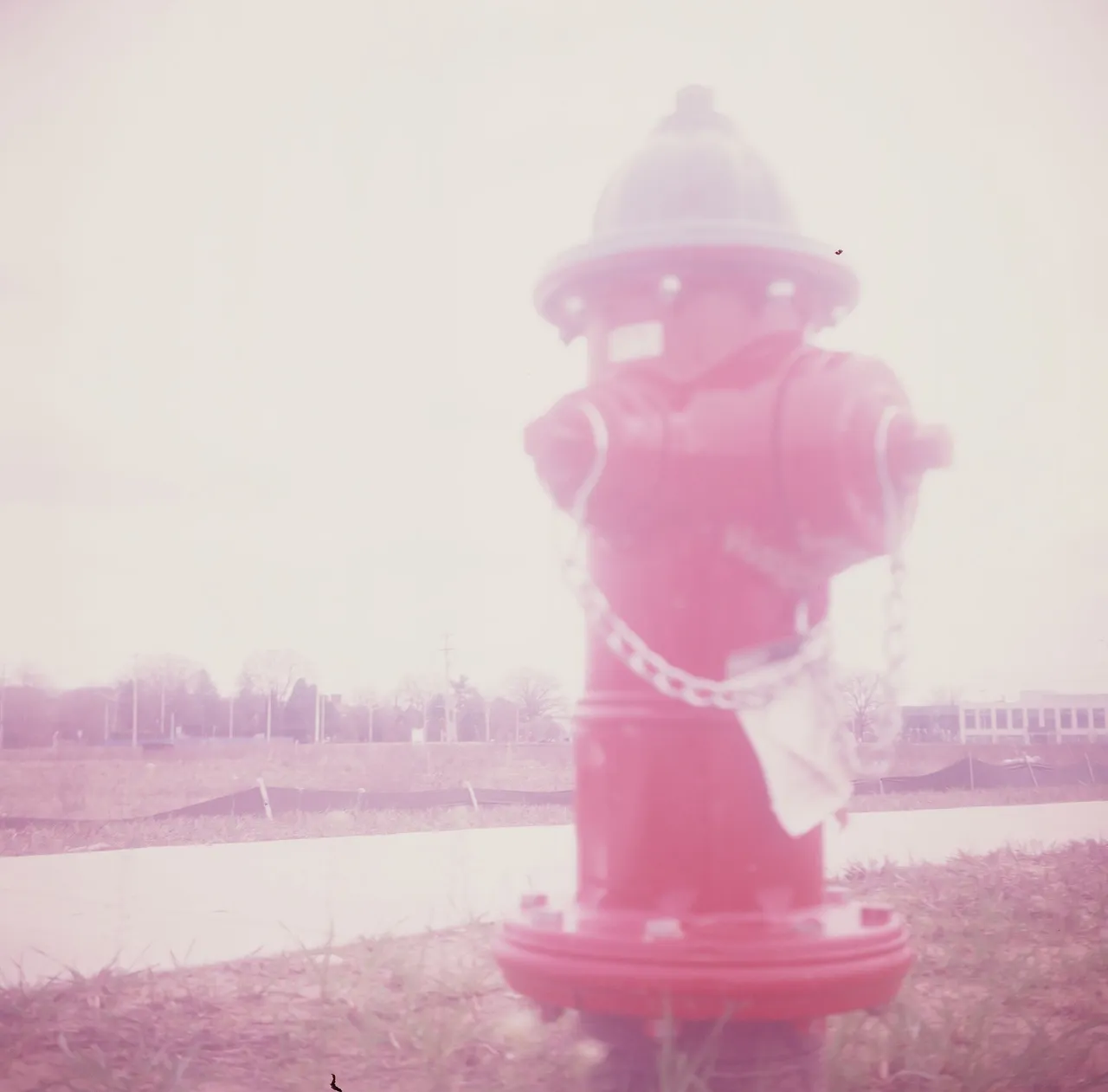
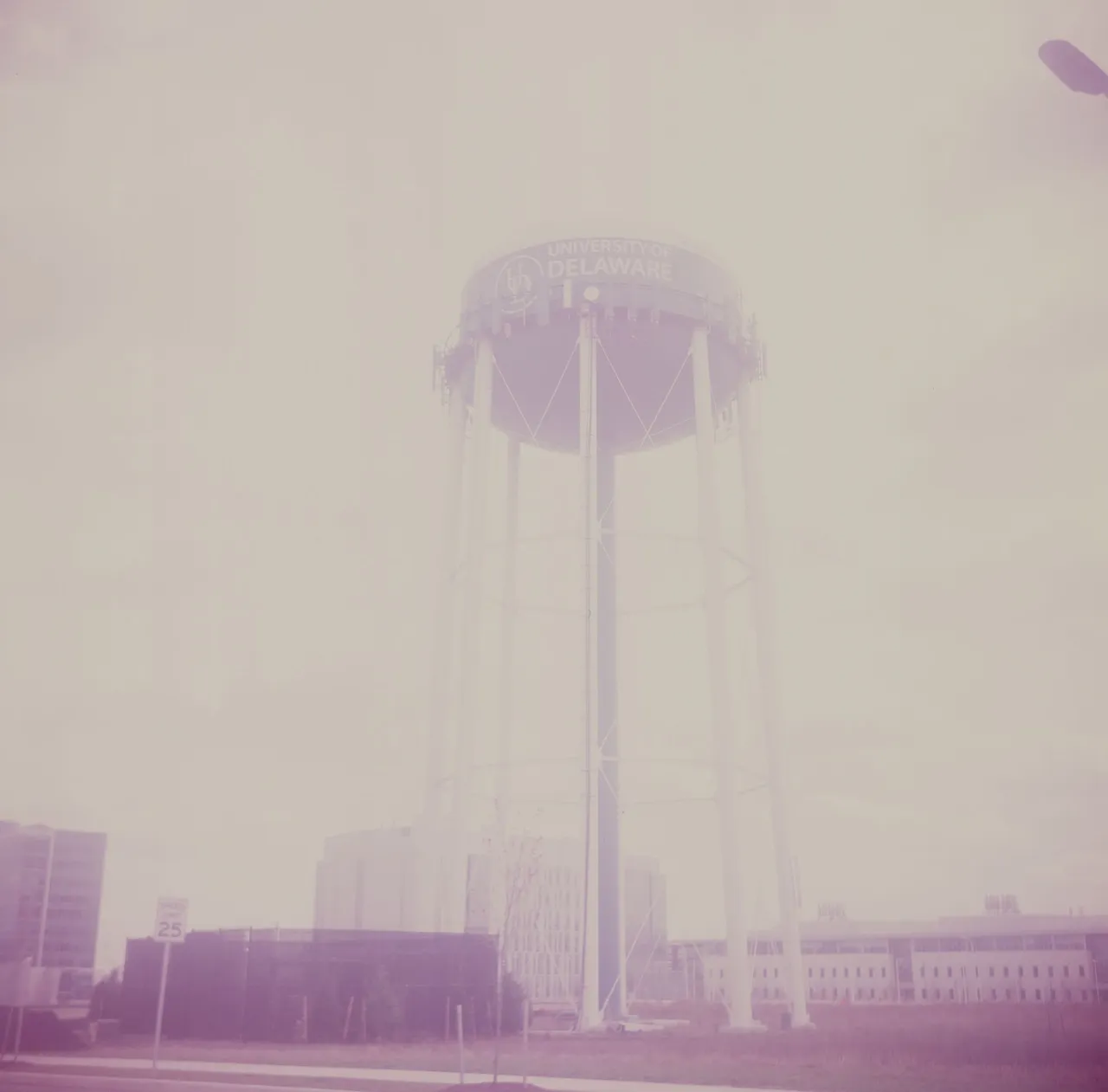
Knowing what I know now, I do plan to use this camera again. Each roll of film gets between 8-12 pictures on it, so it won't take long to exhaust a roll of film. I'd like to try to do some portraits with it.
(c) All images and photographs, unless otherwise specified, are created and owned by me.
(c) Victor Wiebe
About Me
Amateur photographer. Wannabe author. Game designer. Nerd.
General all around problem-solver and creative type.
My Favourite Tags
| #spaceforce3 | #altphoto | #crappycameraphotos |
| #digitalpinhole | #pinhole | #firehydrant |
